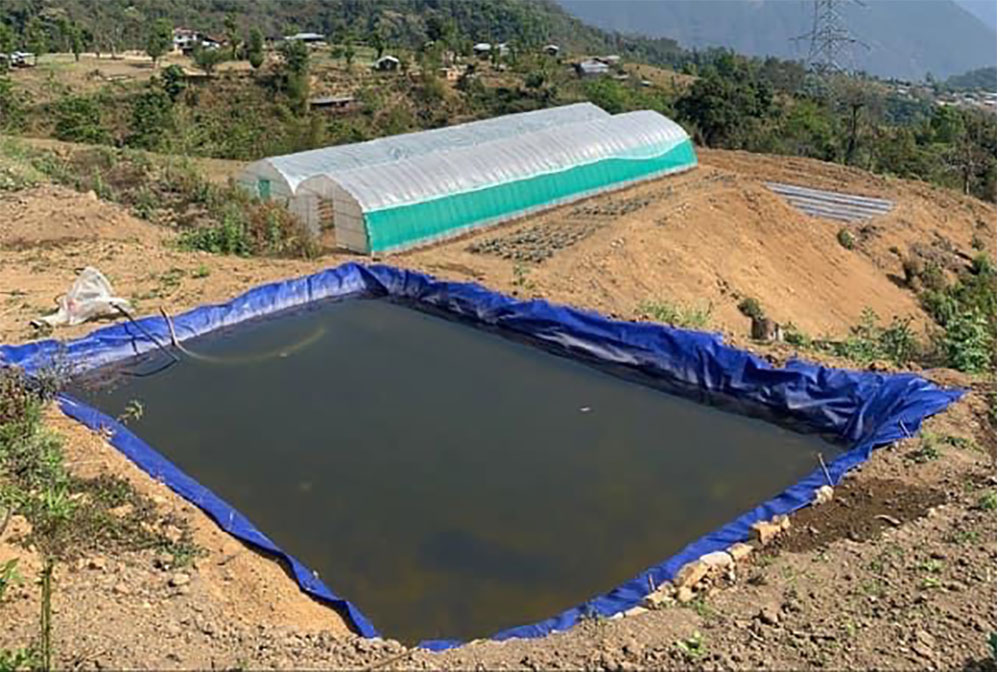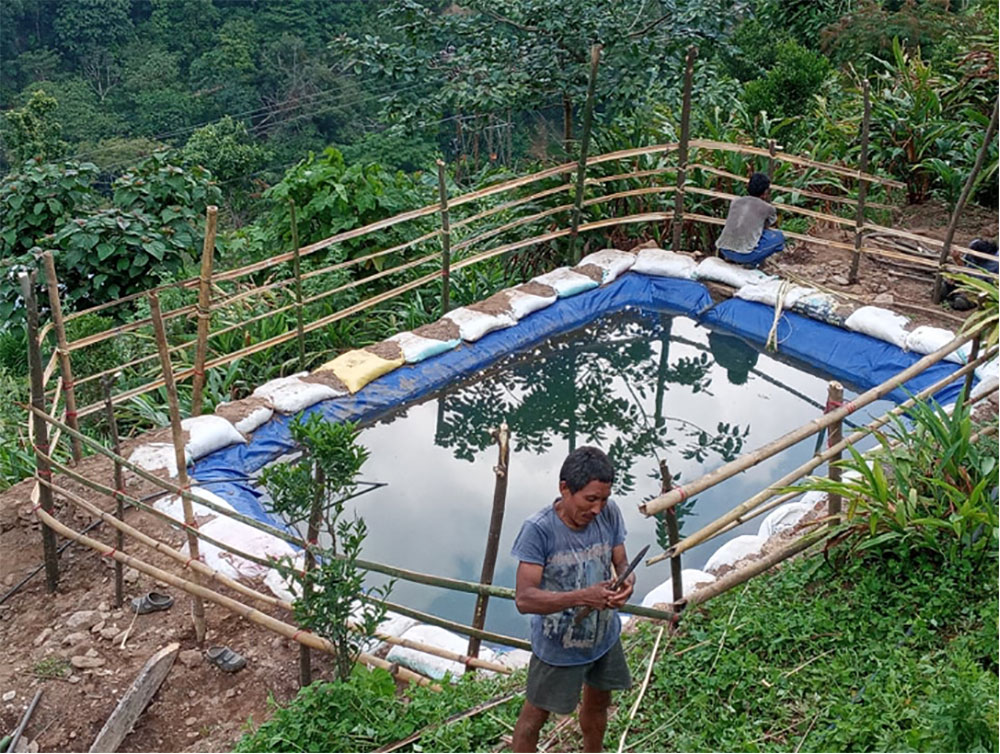Choki Wangmo
In the verdant landscapes of Dagana, a transformation is taking place as water harvesting ponds breathe new life into agricultural production.
Meet Bimal Subba, a forward-thinking youth farmer from Samarchhu, who, with the assistance of the Tsendagang Gewog Administration, constructed a water pond last year.
This endeavour has revolutionised his farming practices, eliminating the struggles of irrigating his five-acre plot.
Gone are the days when Bimal Subba had to laboriously draw water from a nearby stream using pipes. The process was arduous and time-consuming for the 26-year-old and his family. Today, managing the sprinklers on his farm is all it takes to ensure optimal irrigation.
The introduction of water-harvesting techniques, in 2018, has been a game-changer for Dagana’s farmers, who previously grappled with a shortage of irrigation water. Startling figures reveal that out of the 281 water sources in the dzongkhag, 271 are on the verge of drying up. Thirteen have already succumbed to this fate.
Despite its water scarcity, Dagana is proud to be one of the country’s top growers of winter vegetables. Farmers’ extensive adoption of water collection systems has been critical to this achievement.
The initiative, initially spearheaded by the Agriculture Research and Development Centre in Bajo, received subsequent support from the Food Security and Agriculture Productivity (FSAPP) project. Presently, there are 463 beneficiaries across the dzongkhag, with 293 individuals in six gewogs receiving support from FSAPP.
The Green Climate Fund and the dzongkhag annual budget provide additional annual funding.

Dagana is proud to be one of the country’s top growers of winter vegetables
Drujeygang Gewog takes the lead with an impressive 144 water-harvesting ponds, while Tseza gewog lags behind with a mere four. Each pond has the capacity to store between 20,000 and 30,000 litres of precious water.
According to Kinley Namgay, assistant district agriculture officer, water scarcity in the dzongkhag was particularly dire during the winter season, which coincides with the prime farming period.
“Thanks to the water harvesting ponds, we are now able to produce winter vegetables,” he said.
Agriculture and livestock production are the lifeblood of the local economy, providing the primary source of income for residents. On average, households in the dzongkhag earn Nu 7,3040 annually from agricultural pursuits. During the winter months, farmers can harness the water stored in these ponds, ensuring an ample flow for irrigation.
Water is piped into the ponds from nearby sources, serving not only agricultural needs but also providing a valuable resource for washing and cleaning.
Chilli, cauliflower, onion, and tomato take the centre stage in Dagana’s agricultural focus. In the period from 2020 to 2021, the dzongkhag witnessed an impressive yield of 1,409.21 metric tonnes of these vegetables across 1,634 households, cultivating a total of 698.35 acres of land. This bountiful harvest translated into a remarkable income of Nu 113.8 million.
The implementation of water-harvesting ponds has ushered in a new era of agricultural prosperity in Dagana. As the water flows, so does the promise of sustainable growth and economic well-being for its enterprising farmers.


